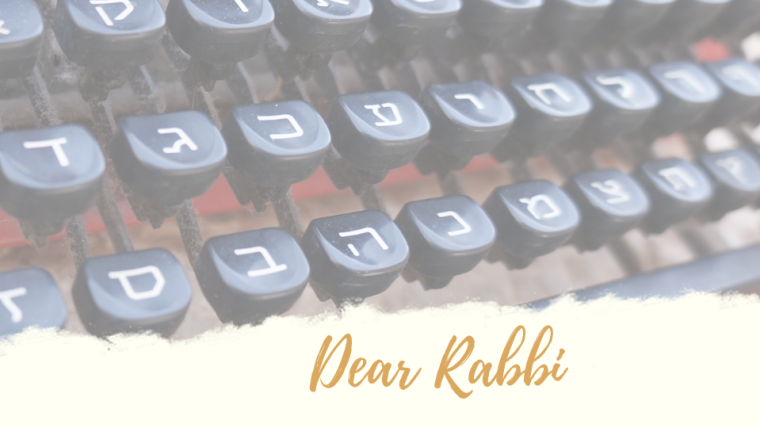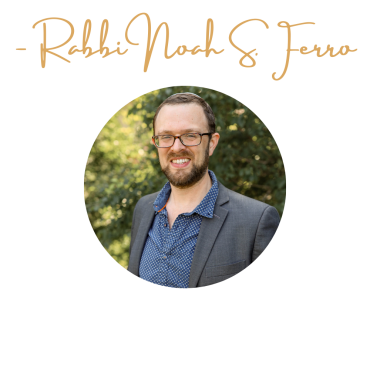Legacy Shabbat
Posted by NHS Communications
Categories: Events, News + Events, Past Events



DO YOU HAVE A QUESTION FOR THE RABBI? WRITE TO RABBI FERRO AT RABBI@NHS-CBA.ORG WITH THE SUBJECT “DEAR RABBI…”
Dear Rabbi,
Here’s something that has been on my mind lately:
Thing 1: I know that sometimes people convert to Judaism. But (Thing 2): I remember learning that we aren’t supposed to tell people they should convert. And (Thing 3) if someone says they want to convert, we have to tell them no three times before we can finally let them in.
And also, we aren’t really supposed to talk about it when someone does convert, right?
So how does anybody ever convert in the end, and how do we deal with the whole process if it’s so secret?
-Curious about Conversion
Dear Name,
Your question is a very relevant one for our community, and it offers a chance to address some misconceptions about conversion.
First, as you say – people do convert to Judaism. Conversion has always been a part of Rabbinic Judaism. The Rabbis identify the biblical figure of Ruth as a model convert; we have a tradition that the early rabbinic sages Shemaya and Avtalyon were converts, and the great Rabbi Akiva is identified as a descendant of converts.
So… you’ve identified some things that you learned about conversion, but these aren’t necessarily the facts. There is no Jewish law concerning turning a potential convert away three times, but it’s a commonly repeated idea. It even came up in an episode of “Sex and the City” back in 2003.
There is also no explicit rule that we cannot encourage people to convert to Judaism at all, but it has indeed been the custom for a long time not to actively seek converts. During the Hasmonean period (roughly 140-37 BCE), conversion to Judaism was encouraged, even by force. One theory is that the negative results of this practice – including the rise of the disastrous Herodian dynasty – made the Jewish people stop encouraging conversion to Judaism. Medieval Jews living under Christian and Islamic rulers were frequent targets for proselytizing, and this experience reinforced their own conviction not to encourage conversion. Nevertheless, Genesis Rabbah (39:14) tells tell us that Abram and Sarai and “the souls they had made in Haran” (one translation of Genesis 12:5), the Torah is telling us that they were converting people to Judaism – the new religion to which they themselves were the first converts.
The Talmud in Yevamot 47a shapes much of what we do around conversion.
There, it says that when a potential convert appears, we ask if they understand the difficulties of being Jewish, including antisemitism. Ideally, they answer by saying: “I know, and I am unworthy.” We then inform them that becoming a Jew means taking on the mitzvot (commandments) and their consequences. If they accept this, we perform a circumcision (if this is a relevant consideration), immerse them in a mikveh (a ritual bath), and then “הרי כישראל לכל דבריו”– this person is as an Israelite in every sense.
“As an Israelite in every sense” might mean that a convert’s background has to be kept a secret. But this idea probably comes from a Torah verse and its rabbinic commentary. “When a stranger resides with you in your land, you shall not mistreat them” (Leviticus 19:33) receives this comment: “You shall not say to a convert: ‘Yesterday you were an idolator, and today you have entered under the wings of the Divine Presence!’” (Sifra Kedoshim, 8:2) The lesson is not that we can never bring up a convert’s past, but rather that we mustn’t use their story to make them feel small or disconnected from the Jewish people.
Earlier, I said your question was “very relevant” for our community. In our world today, contacts between Jews and non-Jews are much more common than they were in medieval Europe, including interfaith friendships, romances, and families. This creates many opportunities for people who aren’t Jewish to
encounter Judaism as a meaningful way to live their lives and to engage spiritually with other people and with God.
Our particular community at Northern Hills Synagogue includes a number of people who are converts and/or members of interfaith families. I myself converted to Judaism as a young adult, and that experience affects my thoughts on Jewish identity, being a rabbi, and guiding the Jewish choices of others.
The bottom line: It is okay to talk about conversion, but if the conversation makes a convert uncomfortable, we should step back. Remembering Abram and Sarai, we should see that talking about finding meaning and relevance in Jewish living could help others to see its value too, whether or not those people are already Jewish. On the other hand, we shouldn’t sugarcoat the challenges of being a Jew. In the end, our tribe is strengthened by welcoming new Jews who are committed to God, Torah, and Jewish peoplehood.


DO YOU HAVE A QUESTION FOR THE RABBI? WRITE TO RABBI FERRO AT RABBI@NHS-CBA.ORG WITH THE SUBJECT “DEAR RABBI…”
Dear Rabbi,
What’s the deal with shaking the lulav and the etrog for Sukkot? Why does God want us to take plants and wave them around? Sorry to say it, but it all seems really pagan to me.
-Leery of the Lulav
Dear Leery,
The short answer to your question is: We don’t know. We wave the arba minim (the “Four Species”) – etrog (citron), palm, myrtle, and willow – each morning of the Sukkot holiday (except on Shabbat) because the Torah tells us to do something along those lines and because our rabbis interpreted the verses in a certain way.
A slightly longer answer: We could decide to begin and end Shabbat every week at the same time, but we don’t. We let the times of sundown and nightfall tell us when to do that, meaning that Shabbat is a very different experience in the middle of winter and the middle of summer. This keeps us in touch with nature. So too, Sukkot helps us get a little closer to the natural world and its rhythms and components. We get in touch with nature (literally) by handling these four plants in a prescribed ritual, just as we spend time eating (and sometimes even sleeping) in our sukkot.
Some scholars suggest that the Four Species could be some sort of fertility symbol, and some say that it’s all about the rain-like sound of the palm branches, thought to bring rain in turn. And still, others like to talk about the symbolism of the Four Species: the eye-shaped myrtle, the lip-shaped willow, the palm that stands and bends like a spine, and the etrog, shaped (maybe?) like a heart.
But I would encourage you to embrace the arbitrary nature of the ritual here. We do it because it is something prescribed by our Torah and our Rabbis. It helps to keep us mindful of the world around us and takes us out of our everyday experiences for a little while by injecting them with something profoundly Jewish but difficult to interpret rationally.
The rest, as they say, is commentary.
